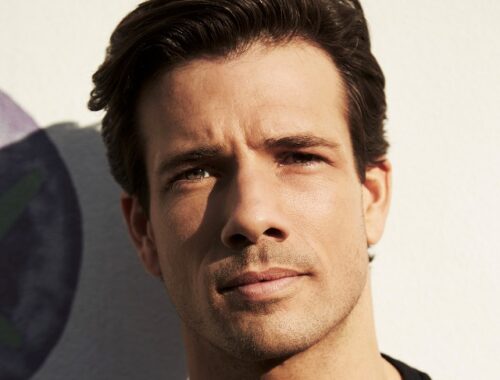GRAMOPHONE Review: Mahler Symphony No. 5 – Düsseldorfer Symphoniker/Fischer
 Adam Fischer’s kinship with this music seems to grow exponentially with each successive instalment of what is already proving an exceptional Mahler cycle. There’s a stylistic and emotional understanding which goes beyond the precisely annotated scores. It has to do with instinct and temperament, a conductor’s most precious attributes; and it has to do with an alchemy with his orchestra – the Dusseldorf Philharmonic – who punch way above their weight and whose characterisation always feels spontaneous never schooled. Perhaps the most impressive thing about this account of the Fifth Symphony is the “in the moment” feeling it engenders from first to last.
Adam Fischer’s kinship with this music seems to grow exponentially with each successive instalment of what is already proving an exceptional Mahler cycle. There’s a stylistic and emotional understanding which goes beyond the precisely annotated scores. It has to do with instinct and temperament, a conductor’s most precious attributes; and it has to do with an alchemy with his orchestra – the Dusseldorf Philharmonic – who punch way above their weight and whose characterisation always feels spontaneous never schooled. Perhaps the most impressive thing about this account of the Fifth Symphony is the “in the moment” feeling it engenders from first to last.
And so the nerve-wracking trumpet fanfare portends an altogether different kind of funeral march where the evenly unemotional melody it proffers (a mistake to make it obviously expressive) is in violent contrast to the crushing drum rolls which punctuate it. There’s a degree of detachment in Fischer’s delivery. And then comes the central release of the movement, a howl of anxiety and derision as intense and overwrought (and ruthlessly clear – woodwind detail, rarely heard, coming through vividly) as Mahler’s shock tactics are wont to be. The reediness of the march’s return is chillingly effective (now slightly tawdry) with the ensuing implosion of the music somehow inevitable.
Fischer rightly makes something very dramatic of the attacca into the second part of the “twinned” first and second movements, the latter a darker, angrier, flip-side of the first with all its sudden disintegrations and vain attempts at lyric relief. The solo cellos episode here is deeply wistful, inward-looking. But the turbulence prevails in inky black saturations of sound. The terrible burden of emotion that Mahler and Fischer convey at 10’ 33” with all the strings in their lowest chest registers is harrowing in a way that only Bernstein in his famous Vienna Philharmonic recording dares to underline so emphatically. All of which makes the one hopeful moment of brightness in the movement – the premonition of the symphony’s sunny coda – the more exultant and hopeful.
The core of the symphony – the extraordinary (and challenging) scherzo – is, of course, what truly separates the real Mahlerians from the imposters. The cardinal sin here is to hurry. It’s all about taking Mahler at his word and finding space in and around the sound to allow one perspective to open on to another in reverie and awe. As the solo horn (not credited) and its stopped “echo” exchange summon each other across the valleys there’s that rustic, slightly tentative, awkward, pizzicato passage into which Mahler has his solo oboe hesitantly (or “shyly” as he marks it) offer his or her take on one of the movement’s key tunes. Like Bernstein, Fischer makes magic of the whole episode right through to the misty-eyed trumpet who has his sights set on the farthest horizon. And as this particular landler grows cosmic and the horns once more reach for the stars it’s as if all nature stops to listen. There really hasn’t been a more telling account of this movement since Bernstein and it is a tribute to the Dusseldorf players that they can muster so much of the instinctive tradition of their Viennese counterparts.
Another aspect of Fischer’s Mahler that invites comparisons with only a select few is the improvisatory nature of the phrasing. All those complex and challenging rubatos that are the syntax of Mahler’s very particular musical language. The shapely Adagietto is just that, fluid and pliant in its songfulness. It is graceful and heartfelt and not at all over-upholstered in terms of speed or sound. But nor has someone taken a stopwatch to it. It takes as long as it takes (around 10 minutes) as if it’s created in the playing of it with moments like the attenuated phrase leading to the glissando sigh sounding fresh and surprising.
The finale, too, is light on its feet and I particularly note the way in which the adagietto material is aerated and made to dance – rhythmic and elegantly turned but muscular and exultant in the big climaxes. The coda is properly thrilling with Fischer allowing himself a fabulously expansive release into what I like to call one of Mahler’s really expensive moments.
This is one Mahler symphony where there is a clear and enduring recommendation: Bernstein’s VPO account on DG is pretty peerless. But the fact that Fischer comes even close is testament to his empathy with this music. I can’t wait for the symphonies to come. I feel sure that he won’t disappoint.
You May Also Like

TALKING POINT with DANNY MAC
06/08/2023
BBC Radio 2 Arts Show with Claudia Winkleman
12/10/2014

